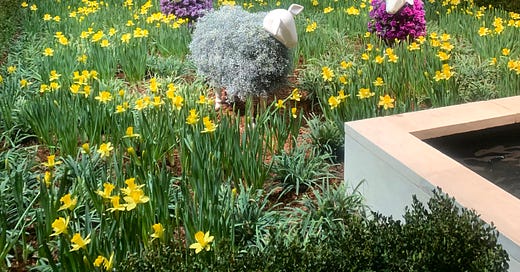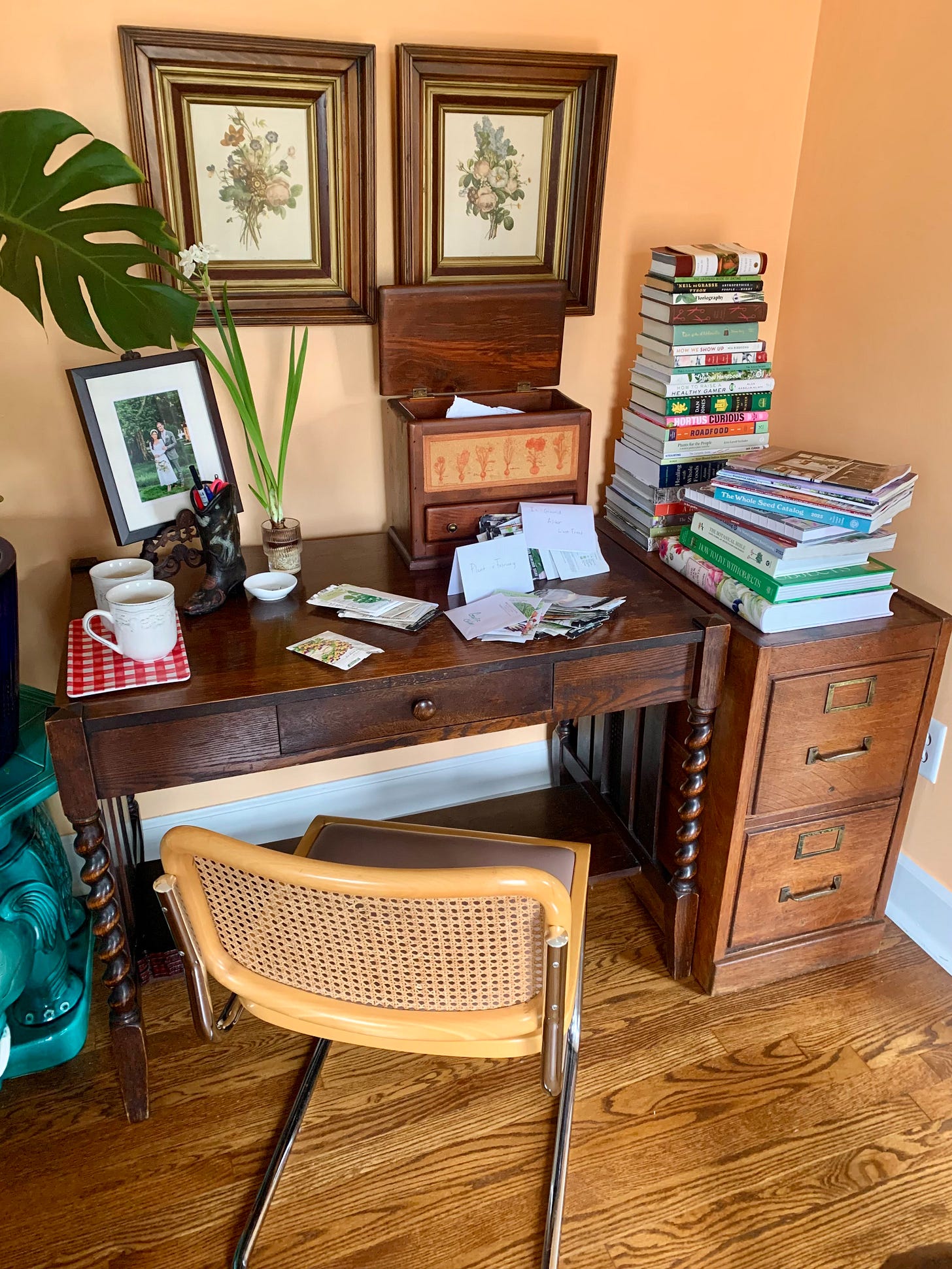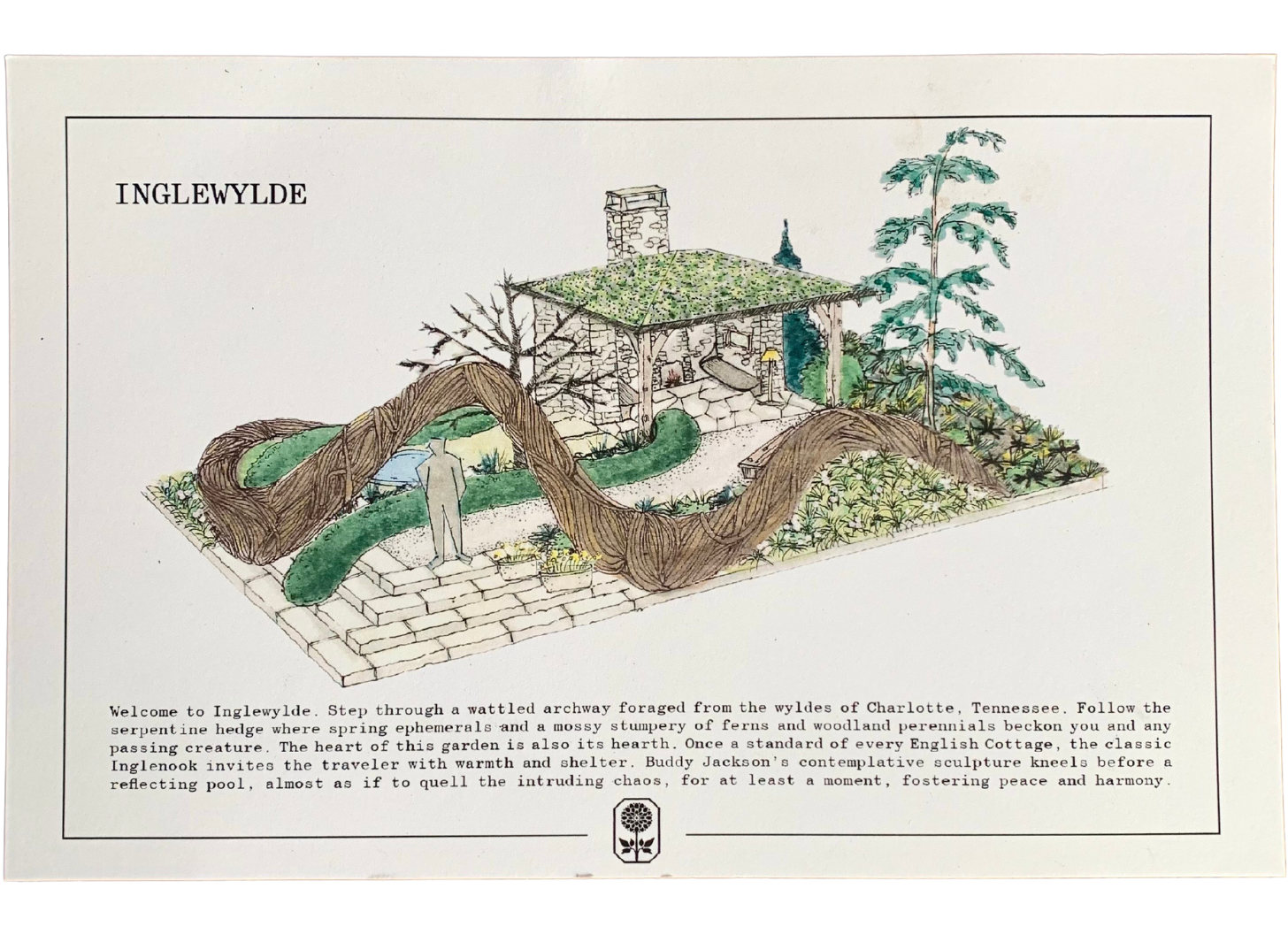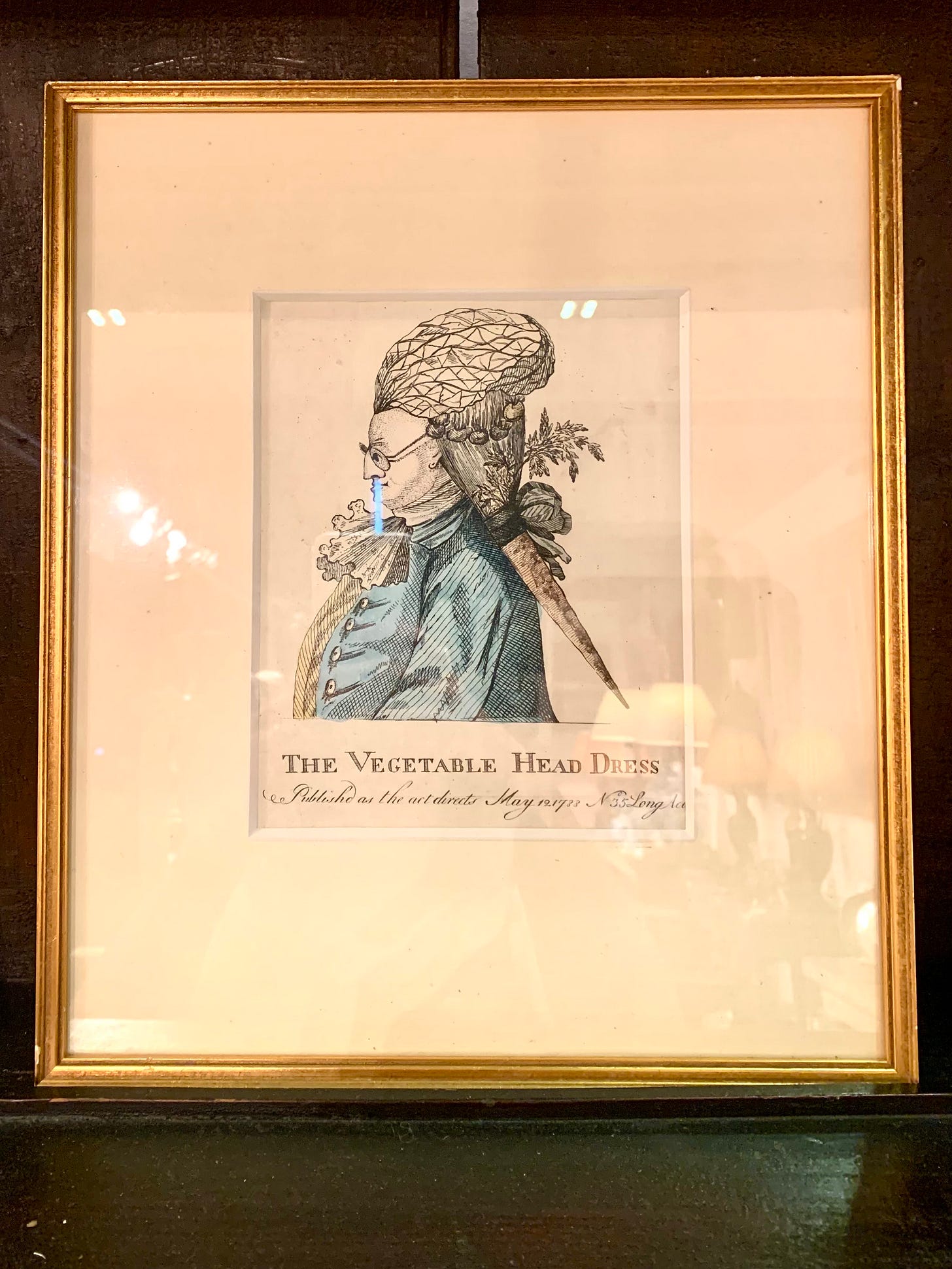Bring on the bulbs
Planting daffodils and tulips, plus my visit to Nashville's annual Antique & Garden Show.
Throughout the week of January 27 to February 2, things have been warming up in Nashville and Middle Tennessee. While Nashville officially moved up a “plant hardiness zone” back in 2023 (we changed from 7a to 7b), this time of year is typically bone-chilling. To my delight, however, this week brought a rare change: sunny days and temperatures climbing as high as 65°F. There were also occasional overcast skies and occasional hours of drizzle made for the perfect seed planting conditions.
The week kicked off with planting bulbs in my front yard (I’ll share the process of creating those beds), while the weekend was all about attending Nashville’s 35th Annual Antique and Garden Show.
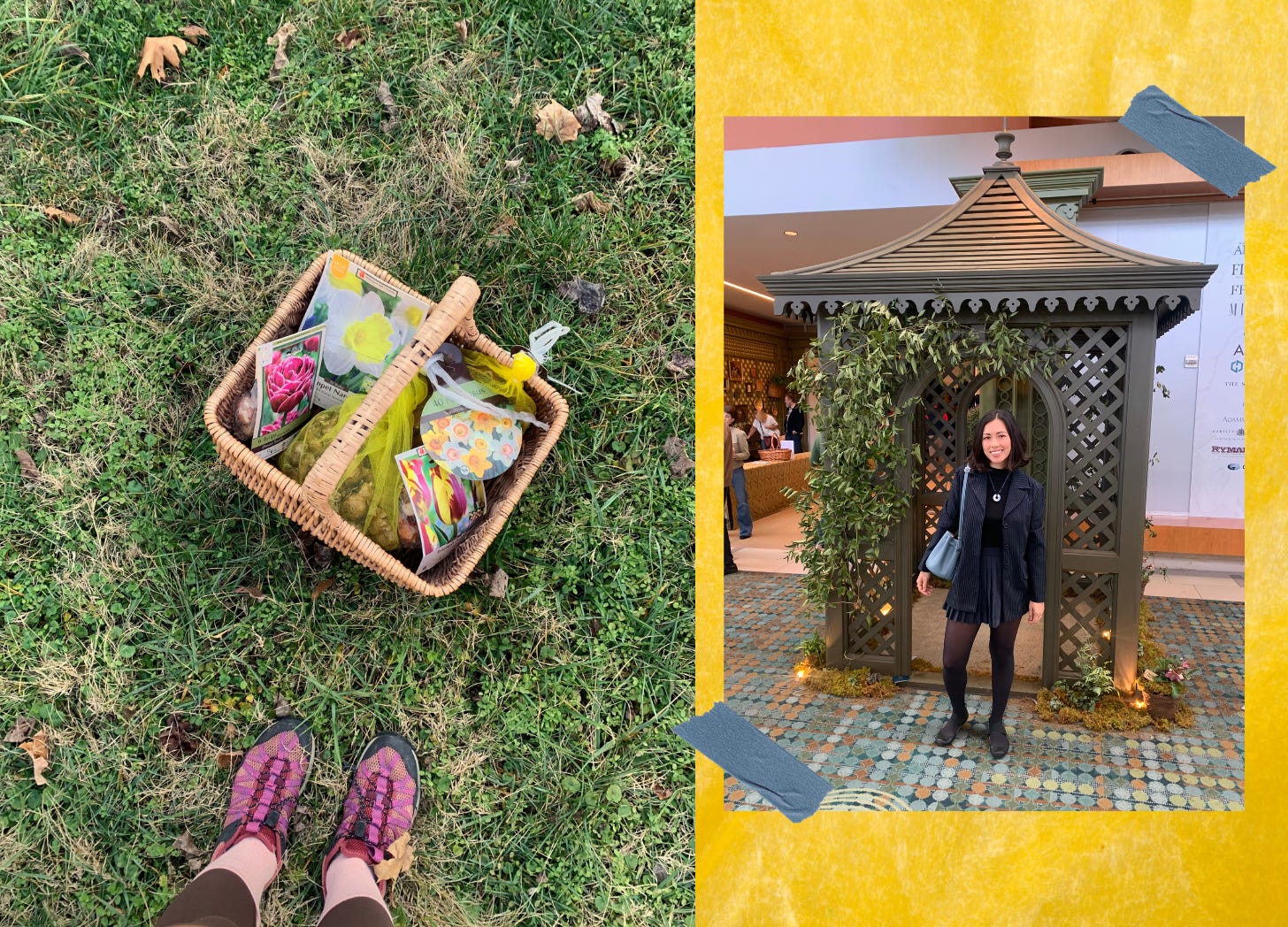
Alongside fabulous antiques, I discovered a wealth of garden inspiration—especially for bulb planting and decor. It perfectly aligned with my newfound obsession with bulbs this year (more on that below).
Let’s dig in with a day-by-day look back at my week!
I moved into my East Nashville home a few years ago and the entire property was coldly landscaped, likely because it was a flip house. It had no food or flowers to offer, making it feel more like an office park than a cozy home. Think evergreen shrubs and ornamental trees (though fortunately, I did inherit some creeping phlox and a redbud, which are lovely in the spring).
As someone passionate about cooking and home-grown food, creating a kitchen garden in the backyard quickly became my top priority. Over the past few years, I’ve focused on building beds and planting perennial herbs (like rosemary), native prairie flowers (like echinacea), and fruiting plants (such as elderberry) to help soften the landscape.
After fine-tuning the kitchen garden, I’ve finally turned my attention to the north-facing front yard that slopes up from my house. It faces a busy road where cars speed by at 30 mph, making it noisy. With only one tree in the yard and nothing to block the road, the view from my living room and dining room windows is often filled with cars whizzing past at the top of the hill. To address this, I decided to create a screen of plants along the stretch of my yard that borders the road that will block our view.
My hubby and I spent countless hours researching plants that would be tall enough to cover the high road in view without completely enclosing our yard. We also wanted something colorful and perfect for the south, as our landscaping had been incredibly sterile. The conclusion? We decided on planting three large pink crepe myrtle trees (sometimes called crape myrtle, the botanical name is “Lagerstroemia”), which we planted in early January to add a pop of color. The effect will be like floating clouds of pink in the distance in the summer and fall months, rather than flashes of Nashville commuter traffic.
When planting, we created beds around the base of the trees. The planting itself was easy, but pulling up the grass to create uniform beds in width with a tape measurer took the most time. I probably spent four hours across two days removing stubborn, unwanted turf with a hand trowel and my trusty Hori Hori knife.
The second day (technically Tuesday but never mind that) was a lot easier with the support of hot coffee and my doggo, Brisket. It was so precious—Brisket, was peering through the glass in my front door, whining as I worked on the beds. I decided to let him join me, on the condition that he stayed close by. He had a hard time sticking near, so I laid down my jacket for him to lie on. He promptly curled up and napped for two hours under the sun.
The thing is, I assumed we’d just mulch those beds—that was the only plan I had for them, at least. However, two weeks ago, while shopping for daffodil and tulip bulbs to force indoors, I thought, “Why not plant some outside too?” That’s when the brilliant idea to plant them in my fresh, new garden beds came to mind. Plus, since the crepe myrtles don’t bloom in the spring, these bulbs will add a splash of color that my front garden desperately needs.
I’ve always admired—and basically gone gaga over—the few homes in my neighborhood with bulbs blooming in the spring. There’s something so admirable about the intentionality of planting bulbs; it shows you’re a planner for pure beauty, not just practicality, which I think is such a major flex.
The game plan? A mix of daffodils and tulips, which I’ll also plant in terracotta pots and place by my front door to create a cohesive look throughout my front yard. Since the front of my house is mostly shaded, I’ve decided not to plant any bulbs in the landscaping directly against the house.

Though I purchased an array of bulbs in a variety of colors, I kept the front yard plantings strictly white and yellow (any pink-colored bulbs will be reserved for indoor or in my kitchen garden). I also opted for teardrop-shaped planting formations, allowing the daffodils and tulips to grow in natural-looking clumps rather than a grid-like, uniform arrangement.
Now that the planting is done, all that’s left is to wait for these bulbs to emerge. This is my first time planting bulbs, so I’m hoping everything goes to plan. They should start flowering between March and May based on historical data for Middle Tennessee. Of all the new initiatives I’m trying in my gardens this year, this one excites me the most. I can’t wait to see the results!
Sometimes, being productive in the garden isn’t always about being outside or having your hands in the dirt. Planning and organizing are noble and equally important tasks to labor.
As someone who starts a lot of plants from seeds—both indoors and outdoors—my seed collection can get overwhelming. I often use seeds that are up to five years old, and there’s nothing worse than realizing you have fewer seeds of a certain plant than you thought.
I sat at my desk and sorted through my seed storage box. To get organized, I divided the seeds into those that need to be planted indoors versus outdoors in January and February, tucking them into folded pieces of paper labeled accordingly. I also have a group of seeds for planting after the last frost. I find that sorting seed packets by each month in early Spring is the easiest method—it lets me simply grab and go when it’s time to plant.

Sitting at my desk, I went through each seed packet to check if I needed to buy more. Below is a list of seeds I need to buy for the upcoming months (links included from my favorite seed suppliers):
I find this exercise a great way to reflect on plant varieties and scrutinize their packet descriptions for any additional tips to improve my planting success this year. The immediate outcome of this organizing task was deciding which seeds I’d sow outdoors later in the week.
My main priority was planting cold-hardy, spring-blooming flowers and brassicas that thrive in cooler temperatures. While I have several beds in my backyard kitchen garden, I’ve never created a true mixed spring flower bed—until now.
I planted shirley poppies (Amazing Grey, Supreme, Mother of Pearl), stock (Apricot), bachelor’s buttons (Classic Magic), and chamomile (German), aiming for a naturalistic planting pattern.
To keep track, I used my phone camera to mark up where I planted the seeds for each plant—and I repeated this process multiple times for the same bed.

For brassicas, I planted kohlrabi (Early Purple Vienna), arugula (Wild, Common), and mustard (Florida Broadleaf). This time of year provides ideal growing conditions for tender, sweet leaves on brassicas before the sweltering heat of May and the arrival of Cabbage White Butterflies that love to gnaw away at these plants.
If you’re not in the antiques or garden design scene, you may not know about Nashville’s Antique & Garden Show, an annual three-day event in Music City. But if you love plants and enjoy getting decor inspiration from old houses, this event should be on your radar. I’ve been attending for the past few years, and I always leave brimming with ideas and inspiration for my home and garden.
This year’s show embraced a distinctly English-garden theme. From breathtaking garden displays to vibrant spring bulb blooms, it was truly a feast for the senses.
It’s a pretty big deal, with many attendees traveling in from across the country to see the show. A lot of guests are antique dealers, collectors, garden designers, or simply patrons of interior and horticulture design (like yours truly). They also feature exciting keynote speakers, with past rosters including Ina Garten and Martha Stewart.
I attended the Antique & Garden Show on both Saturday and Sunday, with Saturday spent exploring the garden exhibits and vendors with my mom.
A standout highlight was the Cheekwood entry garden, aptly named Vernal Greensward. It offered a charming nod to English landscape gardens and natural settings, complete with the most adorable sheep planters. This whimsical touch has inspired me to incorporate a similar idea into my own garden (I’ve already got my eye on a sheep planter from Etsy).
Hartley Botanic (the English greenhouse maker) never disappoints with their annual greenhouse garden showcase, and this year’s styling was no exception. It struck the perfect balance between lived-in charm and glamorous elegance—a true high-low aesthetic with a bougie yet cozy vibe.
Sterling silver, wicker, and antique porcelain flower ceramics were seamlessly incorporated into the indoor staging, all brimming with bulbs. These elements reflect floral arranging and garden trends that are poised to grow in popularity this year, as more people gravitate toward naturalistic yet heritage-inspired pieces for their garden spaces.

Another standout show garden was Inglewylde, which featured a naturalistic fence crafted from grapevines surrounded by evergreens and daffodils. It even included an open hearth design—a charming nod to its English cottage inspiration. My pictures didn’t do it justice, but here’s an Instagram video by the designer (@daighrick.la).
Another highlight of Saturday was coming across a vendor that specializes in rare plants, called Harvesting History. In my obsession with bulbs, I decided to purchase whatever drew my eye visually. This resulted in me picking up some hardy gladiolus (similar here) and purple shamrock (similar here). I have absolutely no plans for these yet, so I’ll need to figure out where they’ll fit into my gardens soon!
My favorite find of the day, however, was a young two-foot calamondin tree—what we Filipinos call calamansi. Calamansi trees are not easy to find locally and need to be purchased online. So to stumble upon it at the show was the best surprise.
I’ve been wanting to purchase a calamansi tree for months ever since learning how well they thrive indoors and because they’re such a distinctive part of Filipino cuisine.
Best described as a cross between a lemon and an orange, calamansi is a staple in Filipino cooking, often used in sauces, marinades, or as a garnish. If you’ve ever had Filipino food, you’ll notice a love for sour flavors—and calamansi is a big reason why. I also adore their perfect mini size, about as small as a ping pong ball, making them ideal for a quick squeeze over a plate of food. Typically, I substitute lemons for calamansi, but slicing lemons into segments for squeezing can feel tedious. This tree is going to be a game-changer!
Sidenote: FEATR is an excellent resource for exploring the cultural and biological significance of calamansi in the Philippines.
I was joined by my husband, who is more of an antique aficionado, at the big event. He enjoys attending auctions for antique furniture and collecting art, so this show is always right up his alley.
I spent the day exploring the antique vendors for botanical-inspired home decor. Granted, many of the prices are eye-watering and impractical, but the whole point of going is to gather ideas.
Case in point: this adorable teardrop travel trailer, with plant shelves in the trunk and a cozy interior outfitted with Union Jack-embossed pillows. Sure, it’s not the most realistic—like, at all—but the charm and aesthetic are absolutely unmatched.
Another piece that caught my eye was this charming print of a nobleman caricature with a vegetable headdress (seriously). This cheeky genre of art and style appeared several times throughout the show, with many vendors showcasing similar antique cartoon prints and paintings.
While I regret not inquiring or even snagging this exact piece—since I can’t seem to find it anywhere on the internet—I do think there are several alternatives out there for vegetable-man-inspired art.
The 16th-century painter Giuseppe Arcimboldo is a renowned artist known for his playful use of vegetables to create stunning illusions. The Vegetable Gardener (or Vegetables in a Bowl) is my personal favorite, but Autumn is a close second. I’m currently debating which of Giuseppe’s works to choose as a print.
Last week was a busy and interesting one, and there’s plenty in store for next week’s post now that the temperatures are warming up. If you enjoyed reading this weekly recap, don’t keep it to yourself—share it with your green-thumb friends!
As always, thanks for digging into my garden journal! Subscribe for free to get all the weekly updates over the next 12 months. 🌿


